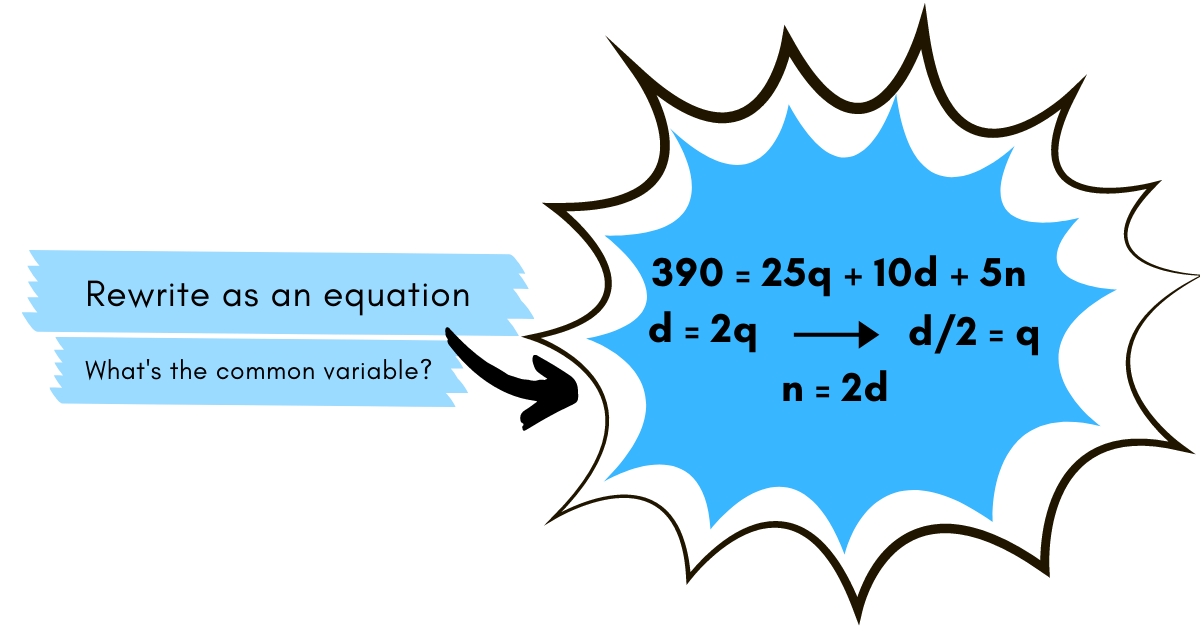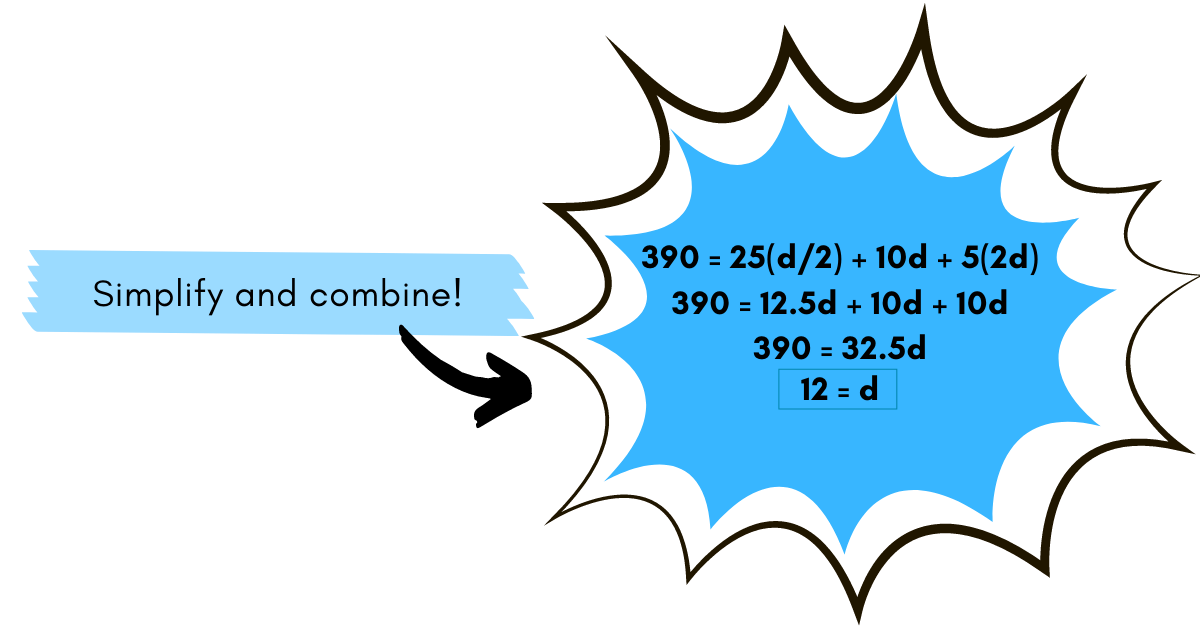Math is complicated enough when trying to make sense of numbers alone, and even more so when words are thrown into the mix. In this useful Math with Margo tutorial, she’ll show students how to convert word problems into algebra terms and then find an easy solution.
Follow along step-by-step, and your student will understand algebra terms and how they fit into complex math problems.
Key Vocabulary
Before we begin, let’s touch on some important vocabulary. What is a variable? An expression? Here’s a quick refresher before we dive into today’s problem.
Variable: In algebra, a variable like x or y symbolizes an unknown value.
Expression: A mathematical expression is a group of numbers, operators, and symbols. Expressions can include addition, multiplication, subtraction, and division.
Learn more: Easy Division Tricks & Tips
Terms: A term is a single mathematical expression: one number, operator, or symbol.
How to Translate Word Problems Into Equations
Let's go through an example problem to get some practice translating word problems into equations.
Problem: A person exchanges 390 pennies for quarters, dimes, and nickels. The number of dimes in the exchange was twice the number of quarters and the number of nickels was twice the number of dimes. How many quarters were in the exchange?
 Confused? Never fear! Word problems like this seem complicated at first, but with Margo’s method, soon you’ll understand the key parts.
Confused? Never fear! Word problems like this seem complicated at first, but with Margo’s method, soon you’ll understand the key parts.
Step One: Highlight Important Parts of the Text

Step Two: Establish your variables
- q represents the # of quarters
- d represents the # of dimes
- n represents the # of nickels

Step Three: Rewrite the Problem as an Equation
Since we have three equations and three variables, we can use substitution to solve for a variable. Which variable is in each equation?
That’s right, d is.
d = 2q needs to be written as “q =” so we can replace the q in the first equation with something in terms of d. If we divide both sides by 2, we are left with d/2 = q.
n = 2d is already in the form we want. We can substitute n in the first equation with 2d, since they are equal in value.
390 = 25q + 10d + 5n
d = 2q ⇒ d/2 = q
n = 2d

Step Four: Substitute

Now we have one equation with one variable, and we can simplify it to solve out for d.
Step Five: Simplify and Combine Terms
Start with simplifying each term. Next, combine the like terms.
When a number is pushed up against a variable it implies multiplication, so to get the d variable by itself. We need to do the opposite operation, so divide both sides by 32.5.
Remember, "d" represents the number of dimes, so there were 12 dimes in the exchange.

Step Six: Divide Each Side of the Equation
Since we are ultimately trying to find out how many quarters were in the exchange, we can use the original equation we set up that has a relationship between the number of dimes and the number of quarters.
We know that d=12, so we can substitute d for 12 and then solve for q.
Divide both sides of the equation by 2 to get q by itself.

Step Seven: Solve
Therefore, our final answer is that there were 6 quarters in the exchange!
As the above hopefully shows, math doesn’t need to be a headache; in fact, there are many ways to make math fun! If your child has an aptitude for math, but could use a challenge, a math competition or game could be just the motivator they need.
If math class isn't not your student’s cup of tea, there are excellent resources to support their learning out there, like this recent post presenting a few fascinating facts about math that are sure to pique the interest of reluctant mathematicians.
Plus, Margo’s math expertise spans other tutorials in solving for x, converting decimals into fractions, and some helpful advice for studying for that next math test or quiz.
For more personalized support, iD Tech’s top-notch instructors offer one-on-one online math tutoring in subjects ranging from geometry to pre-algebra and statistics to help kids achieve their goals in math.


